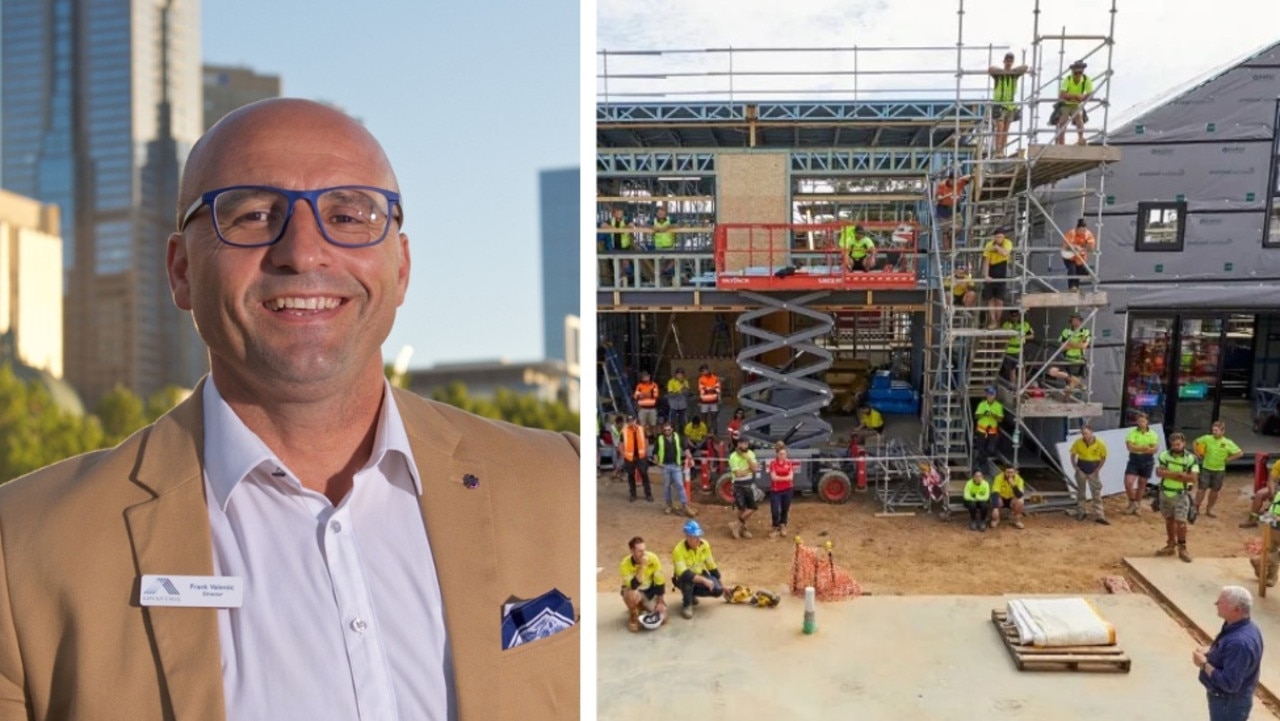Melbourne suburbs where owners have enough spare cash to buy another property revealed | Digital Finance Analytics
The average household in more than 20 Victorian postcodes is sitting on enough spare cash to put down a deposit for a another property. And its not just rich-lister areas. SEE THE LIST

The average household in more than 20 Victorian postcodes is sitting on enough spare cash to put down a deposit for a unit.
Experts believe the data has revealed the areas where the bank of mum and dad lives— and it’s not just rich-lister suburbs.
Postcodes with at least $121,000 saved up include several pockets around the Dandenong Ranges from Olinda to Beaconsfield and Berwick.
RELATED: Bleak prediction for Australia’s home building future
Reason Vic beachside locations could jump in price in 2025
Thai developer approved to take over 12 Aussie housing estates
The sum would cover 20 per cent of Melbourne’s $608,000 median unit price, the amount needed for a deposit in most scenarios.
Another 25 areas around the state with $100,000-$121,000 available feature the likes of Docklands in the city, Essendon in the north and Plumpton to the west.

Meanwhile, the well-heeled residents of Toorak have an average of $86,500 available for investing, those in leafy Ivanhoe have about $53,000 set aside and the typical Sorrento household has just $24,000.
The national average is $37,367.
The Digital Finance Analytics modelling, commissioned by exchange traded funds management group Betashares who have launched a Spare Cash Flow and Financial Opportunity Index, was based on quantitative and qualitative surveys across the country measured against demographic data.
The Demographics Group co-founder Simon Kuestenmacher said with financial literacy improving, most people would only have large sums of money in the bank as opposed to invested if they were planning a large purchase — and most of them were likely to have paid down their mortgage to be in that position.

“It might be that ‘my time is now plan’ to go on a big cruise or caravan around Australia,” Mr Kuestenmacher said.
“But the bank of mum and dad is the most likely thing. Everyone is worried about their kids, and the housing cycle adds up. Once you have paid for your mortgage, then it’s almost time for your kids to get a mortgage.”
As a result, he said the postcodes with the highest amounts funding available were likely to reflect the areas where the bank of mum and dad’s funding was coming from.
Berwick-based Obrien Real Estate boss Dean O’Brien said many residents in the suburb, as well as nearby Beaconsfield, had bought there a decade or two ago – and he was seeing consistent signs many were now seeking to help their grown up kids buy a home nearby.
“There is enormous wealth in Berwick and it is being transferred to ensure that family stays in the area,” Mr O’Brien said.
He added that while many might think of the area as a gateway to Gippsland, today it hosted homes worth upwards of $10m.

The area’s blue-collar image is also increasingly being influenced by a more white-collar crowd of young professionals, which Mr O’Brien said could also be boosting average local incomes.
Betashares CEO Alex Vynokur said the data showed families did the best job at preparing funds to build wealth, while those who lived in wealthier postcodes were likely to spend more.
“It’s counterintuitive,” Mr Vynokur said.
“You’d think it’s families that would spend more, but they’re often the ones that tend to think most about the next generation.”
He added that more people were looking at other investment options given the rising cost of buying a home, such as exchange traded funds.
But DFA director Martin North said the varying levels of cash available showed the nation was becoming less “egalitarian”.

“There are people who are really doing it tough, but there are also a huge number of households who are doing extremely well; not just because of their incomes, but because they’re spending less on housing costs and are at a stage of life where they can save more,” Mr North said.
“Younger generations are more likely to be renting, living further out, and or have a lot less paid down on their mortgages.”
Melbourne’s most cashed-up postcodes
South Melbourne (3205) — $205,225
Olinda (3788) — $198,802
Port Melbourne (3207) — $198,310
Brighton East (3187) — $192,130
Beaconsfield Upper (3808) — $186,521
Beaconsfield (3807) — $162,942
Chadstone (3148) — $162,222
Carnegie (3163) — $154,977
Berwick (3806) — $154,876
Kurunjang (3337) — $150,458
Dollar figures indicate effective amount of money the average household has available for wealth creation
Source: Betashares Direct Financial Opportunity Report
Sign up to the Herald Sun Weekly Real Estate Update. Click here to get the latest Victorian property market news delivered direct to your inbox.
MORE: How Lambo Guy swept Block auctions by stealth
Who owns Melbourne: Celebs, foreign nations among our icons’ owners
Bleak prediction for Australia’s home building future: HIA
sarah.petty@news.com.au
Originally published as Melbourne suburbs where owners have enough spare cash to buy another property revealed | Digital Finance Analytics



